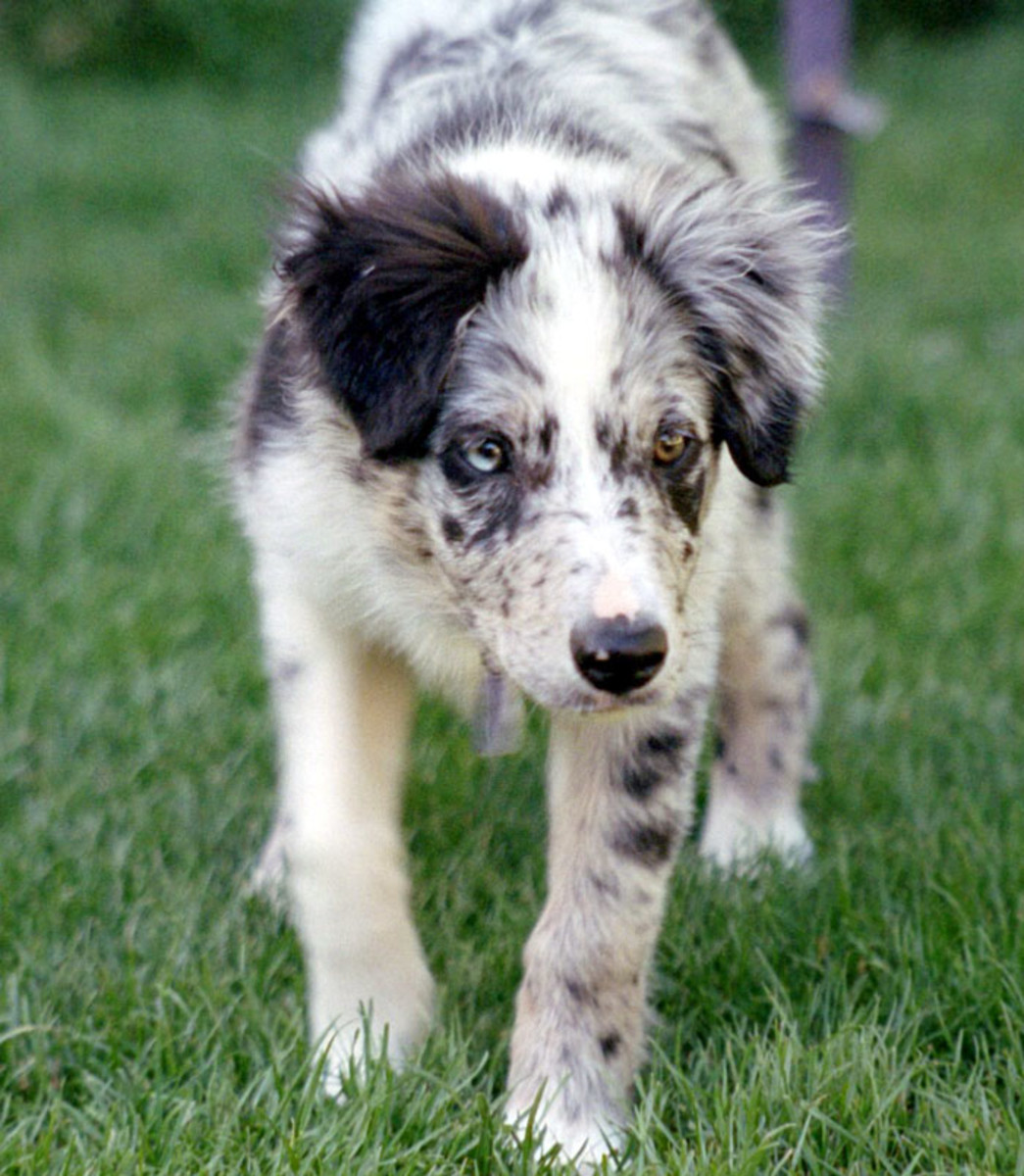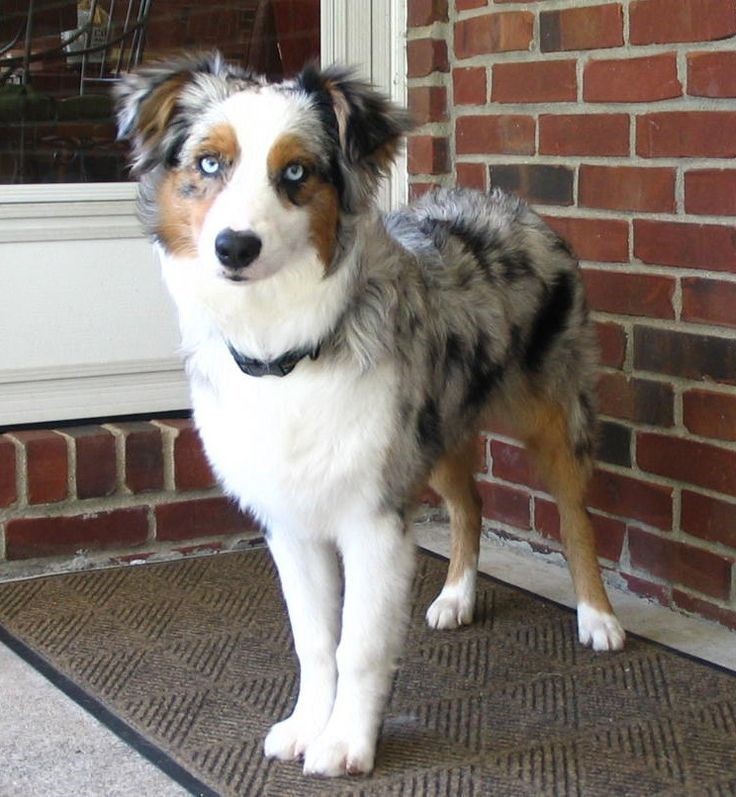Merle coat is a unique and stunning pattern that has captured the hearts of dog lovers and breeders alike. This distinctive coat coloring can be found in various breeds, adding to their charm and appeal. In this article, we will delve deep into the fascinating world of merle coat, exploring its genetics, characteristics, and the impact it has on different dog breeds. Whether you are considering a merle-coated dog or simply curious about this beautiful pattern, you will find valuable insights here.
As we explore merle coat, we will also address some common misconceptions and health considerations associated with this coat pattern. The merle gene can carry both aesthetic and health implications, which is crucial for potential dog owners to understand. By the end of this article, you will have a well-rounded understanding of what a merle coat is, how it occurs, and what it means for your furry friend.
Join us on this journey as we uncover the truth about merle coats, backed by expert opinions, scientific data, and real-life examples. From the genetic makeup to the various breeds that showcase this pattern, we aim to equip you with the knowledge you need to appreciate and care for merle-coated dogs.
Table of Contents
- What is Merle Coat?
- Genetic Background of Merle Coat
- Characteristics of Merle-Coated Dogs
- Breeds with Merle Coat
- Health Implications of Merle Coat
- Caring for Merle-Coated Dogs
- Common Misconceptions about Merle Coat
- Conclusion
What is Merle Coat?
Merle coat refers to a specific coat pattern that is characterized by a mottled or speckled appearance, often combining patches of darker and lighter colors. This unique pattern can be found in a variety of dog breeds and is recognized for its eye-catching and diverse looks. The merle coat can manifest in different color combinations, including blue merle, red merle, and chocolate merle, among others.
The merle pattern is not just a color; it is also a result of a genetic mutation that affects the distribution of pigment in the dog's fur. This genetic variation can produce a wide range of visual effects, making each merle-coated dog uniquely beautiful. Understanding the genetics behind merle coat is essential for breeders and dog owners alike.
Genetic Background of Merle Coat
The merle coat pattern is primarily caused by a specific allele of the M gene. This gene influences the pigmentation in the dog's coat, leading to the characteristic mottled effect. It is important to note that merle is an incomplete dominant trait, meaning that a dog only needs one copy of the merle gene to exhibit the coat pattern.
Here are some key points about the genetic background of merle coat:
- The merle gene can be inherited from either parent, resulting in different coat patterns and colors in the offspring.
- Dogs with two copies of the merle gene (homozygous merle) may exhibit significant health issues and should be avoided in breeding practices.
- Merle patterns can also affect other aspects of the dog, such as eye color and skin pigmentation.
Characteristics of Merle-Coated Dogs
Merle-coated dogs are not only visually striking but also possess unique characteristics that set them apart from other dogs. Here are some notable features:
- Color Variation: The coat can display a wide range of colors and patterns, making each merle dog distinct.
- Eye Color: Many merle dogs have striking blue or heterochromatic eyes (two different colored eyes).
- Personality: While personality can vary by breed, many merle dogs are known for their playful and energetic nature.
Visual Appeal
One of the most attractive aspects of merle-coated dogs is their visual appeal. The combination of colors and patterns can create a mesmerizing effect, drawing attention wherever they go. This unique beauty is often a significant factor in why people choose merle-coated dogs as companions.
Breeds with Merle Coat
Several dog breeds are known for their merle coat patterns. Here are some notable examples:
- Australian Shepherd: This breed is famous for its beautiful merle coats, which can vary in color and pattern.
- Border Collie: Some Border Collies exhibit striking merle patterns, adding to their appeal as working and companion dogs.
- Dachshund: Merle Dachshunds are quite popular, showcasing the unique coat pattern in a smaller size.
- Great Dane: Merle Great Danes are notable for their large size and stunning coat patterns.
Health Implications of Merle Coat
While the merle coat pattern is visually appealing, it is essential to understand the potential health implications associated with this genetic trait. Here are some important considerations:
- Homozygous Merle: Dogs with two copies of the merle gene are at risk of serious health issues, including blindness and hearing loss.
- Regular Health Checks: It is crucial for merle-coated dogs to undergo regular health check-ups to monitor any potential issues.
- Responsible Breeding: Breeders should avoid pairing two merle-coated dogs to prevent health complications in the offspring.
Caring for Merle-Coated Dogs
Caring for a merle-coated dog involves understanding their specific needs, both in terms of health and grooming. Here are some tips for proper care:
- Regular Grooming: Maintain a consistent grooming routine to keep their coat healthy and free from mats.
- Balanced Diet: Provide a nutritious diet to support their overall health and well-being.
- Socialization: Ensure that merle-coated dogs are well-socialized from a young age to promote positive behavior.
Common Misconceptions about Merle Coat
Despite its popularity, there are several misconceptions surrounding the merle coat pattern. Here are some common myths debunked:
- Myth 1: All merle dogs are unhealthy. (Fact: While there are health risks, many merle dogs are healthy if bred responsibly.)
- Myth 2: Merle coat is just a color variation. (Fact: It is a genetic pattern that affects pigmentation.)
- Myth 3: Merle dogs are always aggressive. (Fact: Personality varies by breed and individual, not by coat color.)
Conclusion
In conclusion, the merle coat pattern is a captivating feature that adds beauty and uniqueness to various dog breeds. Understanding the genetics, characteristics, and health implications of merle-coated dogs is crucial for potential owners and breeders. By promoting responsible breeding practices and caring for these dogs with attention to their specific needs, we can ensure that merle-coated dogs lead happy and healthy lives.
We encourage you to share your thoughts in the comments section below, and feel free to explore more articles on our site to learn about other fascinating aspects of dog ownership and care!
Thank you for reading, and we look forward to seeing you again soon!
You Might Also Like
Inspiring Baseball Quotes: Wisdom From The DiamondHow Tall Is Bryce James? Exploring The Height Of LeBron James' Son
Can You Hide An Order On Amazon? Understanding Privacy Features For Your Purchases
Children's Xmas Jokes: The Ultimate Guide To Holiday Laughter
Exploring The Lives Of Gay Celebrities: A Deep Dive Into Their Journey And Impact
Article Recommendations
- Heartland Actors
- Maria Cedar
- Kenneth Petty Wikipedia
- Rainbow Eucalyptus Tree
- Leslie Charleson
- Kaitlyn Krems Onlyfans Leaked
- Alex Lagina And Miriam Amirault Wedding
- Luke Beasley Biography
- Elon Musk Mom Satanist
- Munir Uwaydah


